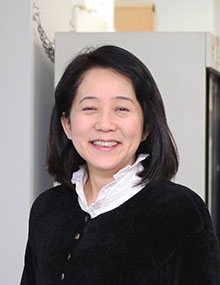
The retina has been called the “approachable part of the brain,” owing to its relatively simple structure and its location near the body surface, and for these reasons it serves as a useful and experimentally amenable model of the central nervous system. Until very recently, it was thought that in adult mammals the retina was entirely incapable of regenerating, but we now know that at least new retinal neurons can be generated after being damaged. This has opened up new hope that the ability to regenerate neurons and even to reconstitute the neural network may be retained in the adult retina. We are now exploring the exciting prospect that, by transplanting cells from outside of the retina or by regeneration from intrinsic progenitor cells, it may one day be possible to restore lost function to damaged retinas.
Our research into retinal regeneration seeks to achieve clinical applications by developing methods for inducing stem cells or embryonic stem cells to differentiate into retinal neurons and pigment epithelial cells in sufficient quantities for use in the treatment of patients suffering from conditions in which such cells have been damaged or lost. We must also ensure that such cells establish viable grafts upon transplantation and induce the reconstitution of functional neural networks. We also hope to develop means of promoting true regeneration by activating endogenous stem cells to replace cells lost to trauma or disease and thus repair damaged tissues. Access to a broad spectrum of developmental biological research information will be key to the achievement of these goals, and we appreciate the opportunities for exchange that working in the environment provided by the RIKEN CDB.
Therapeutic applications cannot be developed from basic research alone; the clinical approach – a thorough understanding of the medical condition to be treated is equally important. For conditions such as retinitis pigmentosa, even the successful transplantation of cells in animal models may not necessarily be translatable to a human clinical therapy without an understanding of the underlying genetics and possible immunological involvement. Our goal is to study retinal regeneration based on both a strong foundation in basic research and solid clinical evidence.

A:…
A:…
A:…
Clinical study of allogeneic iPSC-based intervention for wet-type AMD (Japanese only)
retinalab[at]cdb.riken.jp